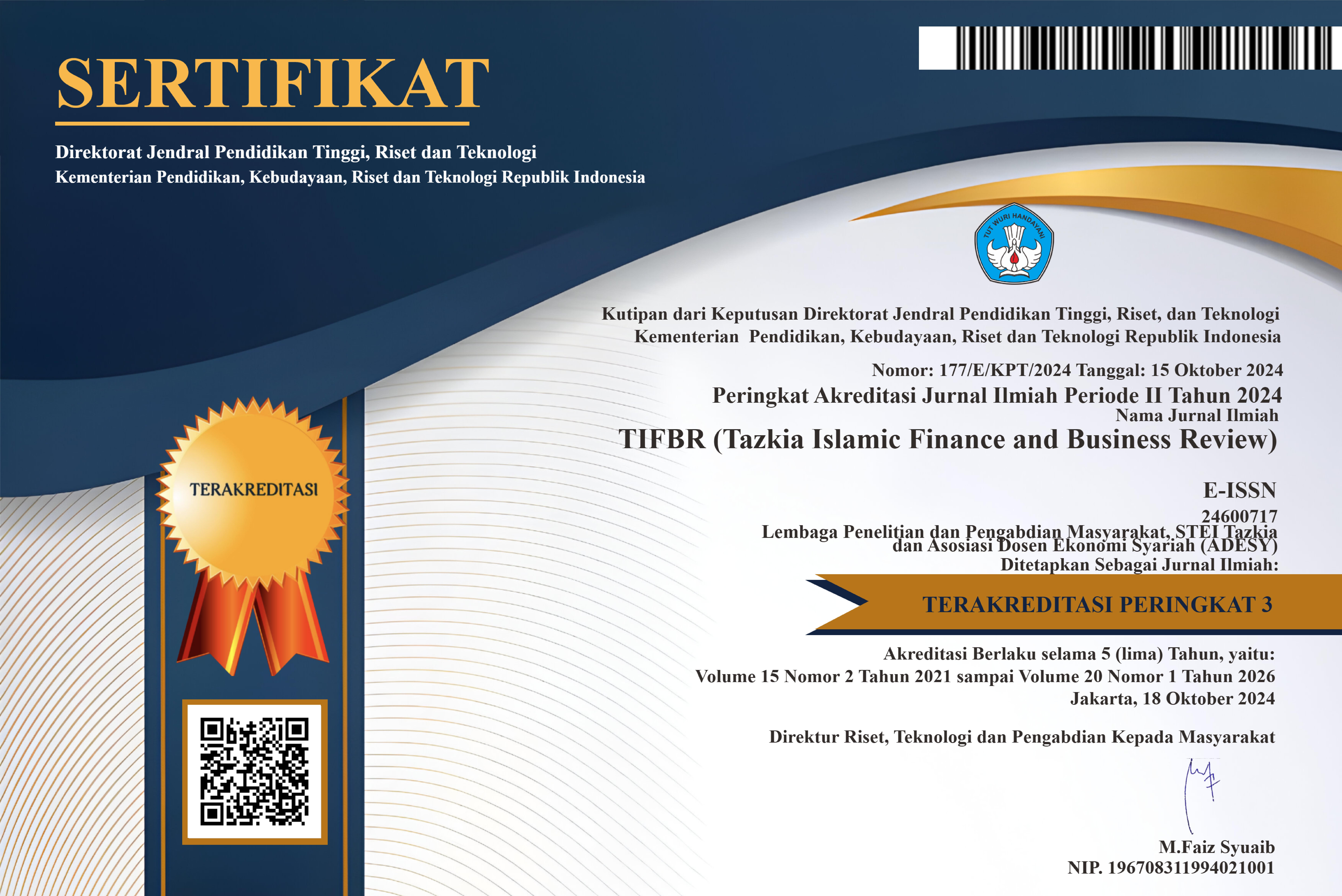Evaluation of Business Model Development through Customer Discovery Approach (Case Study of PT Hijup.com)
DOI:
https://doi.org/10.30993/tifbr.v10i2.108Kata Kunci:
Business model canvas, customer development, Islamic fashion, e-commerceAbstrak
Objectives: Islamic fashion e-commerce grows rapidly in Indonesia. Hijup.com is the pioneer and the biggest player in the industry. In order to thrive in fiercer competition, Hijup.com needs to improve its business model. The study aims to seek a more suitable business model for Hijup.com using customer development approach.
Method: The research used action research strategy. Starting by mapping current businesss model, the research tested the model to customer, revised the business model, and tested back to the customer. The data was collected through an in-depth interview to 60 customers.
Result: The results found that the customers had problems with the user-friendliness of website, product variation, uninformative private shopping, payment methods, and pricing. These problems were not answered yet by the available product and services offered. It was also found that there was neglected customer segment: university students. As response to the problems, the solutions were designed by improving the web with mobile appstore, chat online, layout hot items, adding product variations, credit card promotion, adding new stocks for student segments.
Conclusion: Having tested the solutions to the customers, the majority of them accepted the improvement although there were some minor improvements needed. Based on the new solutions, the new business model for Hijup.com was created.
Referensi
Dailysocial.net & Veritrans.co.id, 2012, E-commerce in Indonesia, Per Agustus 2012, Available on: (http://api.dailysocial.net/en/wpcontent/uploads/2012/08/eCommerce-in-Indonesia.pdf)(http://api.dailysocial.net/en/wpcontent/uploads/2012/08/eCommerce-in-Indonesia.pdf)
Fuady, Munir. 2005, “Pengantar Hukum Bisnis: Menata Bisnis Moderen di Era Globalisasi, Edisi kedua, Bandung: PT Citra Aditya Bakti
Goodman, John, 2012, How Brands can Reach the Muslim Consumer, Ogilvy Noor, Publish on 09 June 09i, Adriena Asian Food Regulation Information Service, Available on: (http://de.slideshare.net/Adrienna/how-brands-can-reach-the-muslim-consumer)
Laudon, K.C, K.C, &, & Traver, C.G, C.G (2010). E-commerce 2010:2010: Business. Technology. Society (SSix Edition).Kend alville: Kendalville: Pearson
Osterwalder, Alexander, 2013, ‘Business Model Canvas’Generation’, Jakarta: GramediaOsterwalder, A., and Pigneur. (2010) Business Model Generation, New Jersey. John Wiley & Sons
PPM Management TeamTim PPM Manajemen, 2012, Business Model Canvas: Implementasi di IndonesiaPenerapan di Indonesia, Jakarta: PPM
Purbo, W. Onno, 2000, Membangun Server Internet dengan FreeBSD, Jakarta, PT Elexmedia Komputindo.
Reason, P., & Bradbury, H. (2001). Handbook of Action Research: Participative Inquiry and Practice. London: Sage Publication.
Temporal, Paul, 2011, Islamic, Islamic branding and marketing creating a global Islamic business, Wiley, Singapore.
Osterwalder, Alexander & Pigneur, Yves. (2013). Designing Business Models and Similar Strategic Objects: The Contribution of IS. Journal of the Association for Information Systems Vol. 14, 238 Issue 5, pp. 237-244
Oliveira, Manuel Au-Yong & Ferreira, João José Pinto. (2011). Business Model Generation: A handbook for visionaries, game changers and challengers. African Journal of Business Management Vol.5 (7)
[Ystats.com Provider Secondary Reseacrh], 2014, INDONESIA B2C E-COMMERCE MARKET 2014, Per June 2014.
##submission.downloads##
Diterbitkan
Cara Mengutip
Terbitan
Bagian
Lisensi

Tazkia Islamic Finance and Business Review (TIFBR) is licensed under a Creative Commons Attribution-NonCommercial 4.0 International License.
Authors who publish with this journal agree to the following terms:
- Authors retain copyright and grant the journal right of first publication with the work simultaneously licensed under a Creative Commons Attribution License that allows others to share the work with an acknowledgment of the work's authorship and initial publication in this journal.
- Authors are able to enter into separate, additional contractual arrangements for the non-exclusive distribution of the journal's published version of the work (e.g., post it to an institutional repository or publish it in a book), with an acknowledgment of its initial publication in this journal.
- Authors are permitted and encouraged to post their work online (e.g., in institutional repositories or on their website), as it can lead to productive exchanges, as well as earlier and greater citation of published work (See the Effect of Open Access).

















